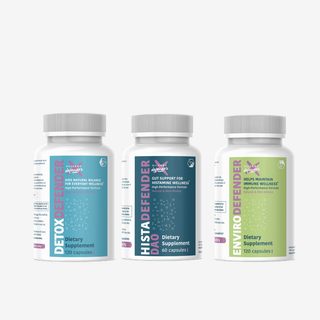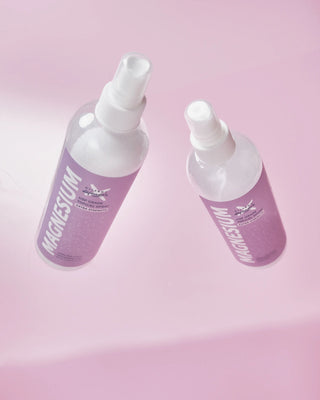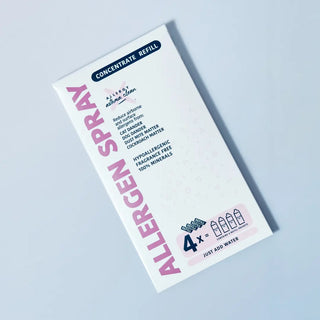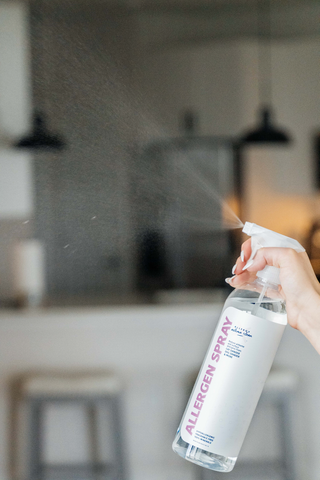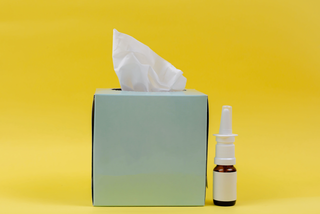Welcome to the conflicting world of indoor scents, where the quest for a refreshing ambiance meets hidden dangers lurking in our air. In our modern era, where comfort and convenience often take precedence, we tend to overlook the potential risks associated with one common household item: air fresheners. These seemingly innocent products, designed to enhance our living spaces with pleasant scents, may compromise our health and well-being.
Indoor air quality plays a vital role in our overall health. How so?
Considering the time we spend inside, it's easy to assume that our indoor air is clean and safe, but the reality is quite different. Many conventional air fresheners contain chemicals that can adversely affect our respiratory system and endocrine (glands and organs that make hormones and release them directly into the blood) balance. These substances, often called toxins and endocrine disruptors, can silently infiltrate our living spaces, impacting our health in ways we may not even realize.
Through this exploration, we aim to raise awareness about the need for safer alternatives prioritizing air quality and our well-being.
Air fresheners have become ubiquitous in our homes, offices, and vehicles. These products mask unpleasant odors to create a more pleasant environment. However, before we dive into the potential risks they pose to indoor air quality, let's better understand what air fresheners are and how they function. "Homemade or "natural" air fresheners made with essential oils are not necessarily free of potentially harmful chemicals, either." 1
Understanding How Air Fresheners Work
At their core, air fresheners are products intended to emit fragrances into the air. They come in various forms, including aerosols, plug-ins, gels, sprays, and scented candles. The scent molecules they release overpower or neutralize offensive smells, leaving a more appealing fragrance.
The Hidden Dangers of Toxic Air Fresheners
While the primary purpose of air fresheners is to create a pleasant aroma, many contain a wide range of chemicals to achieve these desired effects. These chemicals can include VOCs (volatile organic compounds), phthalates, formaldehyde, benzene, and other synthetic fragrances. Not all air fresheners are created equal, and the exact composition may vary among brands and types.
Unfortunately, these chemicals can have detrimental effects on indoor air quality. VOCs can release harmful gases into the air, leading to a phenomenon known as off-gassing. Prolonged exposure contributes to poor air quality, potentially causing respiratory issues, allergies, and other health problems.
Synthetic fragrances and other additives in air fresheners can be serious problems. There are a few prominent Phthalates, such as ethyl Phthalate (DEP), Di-n-butyl Phthalate (DBP), and Di-isobutyl Phthalate (DIBP). "Chemicals called phthalates (pronounced thal-rates) can cause hormonal abnormalities, birth defects, and reproductive problems. NRDC's (National Resource Defense Council) independent testing discovered phthalates in 86 percent (12 of 14) air freshener products tested, including those marketed as "all-natural" or "unscented"—and none of the products we tested listed phthalates on their labels."2
The impact of air fresheners is further compounded by their continuous use in enclosed spaces, such as bedrooms, bathrooms, living rooms, and, yes, even vehicles. People may inadvertently expose themselves to these chemicals all the time.
"Reactions to air fresheners can get worse over time," according to Claudia Miller, professor emeritus at the Family and Community Medicine Department at the University of Texas Health Science Center in San Antonio. She states, "Their chemicals can trigger first responders in the immune system called mast cells, which can cause allergic-like reactions. Repeated exposures can lead to inflammation, illness, and higher chemical intolerance. Once the cells become sensitized to VOCs, it makes them more susceptible to be triggered by them." 3
VOCs in Essential Oils
Essential oils have gained popularity in recent years for their potential therapeutic benefits and aromatic scent. However, VOCs in essential oils are a concern for asthmatics. Asthma is a chronic respiratory condition characterized by inflammation and constriction of the airways.
VOCs such as limonene, linalool, and eucalyptol readily vaporize at room temperature, contributing to their distinct scents and potential health effects. Did you know the Asthma & Allergy Foundation of America states, "In fact, breathing in the particles released by the oils may trigger an asthma attack?"
Managing Air Quality
Maintaining good indoor air quality for individuals with asthma is crucial. Air fresheners are particularly difficult for asthmatics, so we've compiled a quick guide on managing life with scents. :
Minimize or avoid using air fresheners: Synthetic fragrances in air fresheners can trigger asthma symptoms. Opt for natural alternatives if you're looking for a nice-smelling interior- such as opening a window on low pollen days or purchasing certain plants.
Ensure proper ventilation: Good airflow helps reduce the concentration of indoor air pollutants. Open windows regularly, use exhaust fans in bathrooms and kitchens and consider using an air purifier with a HEPA (High-Efficiency Air Particulate) filter to remove allergens and pollutants.
Prioritize safe air quality- your health depends on it!
Resource:
1. https://ehs.umass.edu/air-fresheners-and-indoor-air-quality
2.https://www.nrdc.org/sites/default/files/airfresheners.pdf
3. https://www.washingtonpost.com/weather/2023/02/22/air-freshener-indoor-air-quality/


